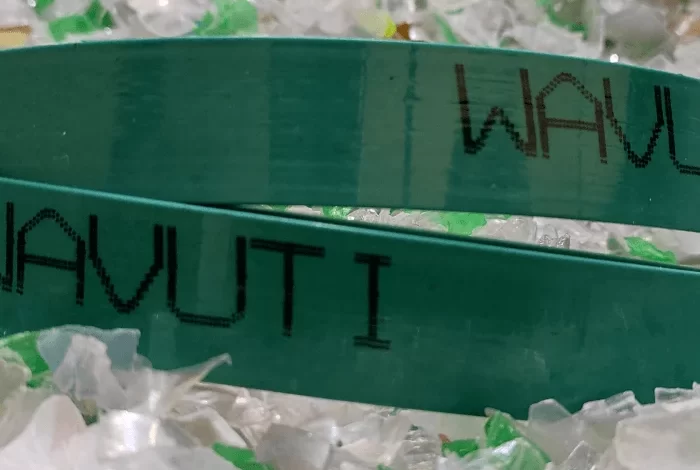
In the evolving landscape of sustainable materials, one standout is RPET, or Recycled Polyethylene Terephthalate. As industries move toward more eco-friendly alternatives, RPET emerges as a reliable, versatile solution. But what makes it special, and where is it most commonly used? Let’s delve deeper.
Introduction
Rpet straps, a close relative of the renowned polyester strapping, is essentially recycled plastic derived from post-consumer plastic bottles and containers. This sustainability-driven initiative has catapulted it to the forefront of green solutions. The overarching aim? Reduce, reuse, and recycle to mitigate our carbon footprint.
The Sustainability Advantage of RPET
In an age where sustainability is not just a buzzword but a necessity, the importance of RPET cannot be overstated. RPET, or Recycled Polyethylene Terephthalate, is offering solutions that benefit both the environment and industries. Below, we dissect the manifold advantages of choosing RPET:
1. Waste Reduction
The primary benefit of RPET is its contribution to significant waste reduction. Every ton of plastic bottles recycled prevents the addition of several cubic meters of waste to our already overstressed landfills. This not only helps in conserving space but also reduces the risk of plastic leaching into the soil and contaminating groundwater.
2. Energy Conservation
Manufacturing products from RPET consumes considerably less energy compared to producing them from raw materials. The energy saved from recycling a single plastic bottle can power a light bulb for several hours. Now, imagine this on an industrial scale – the energy savings are monumental.
3. Carbon Footprint Reduction
Associated with the energy conservation point, the use of RPET directly results in reduced carbon dioxide emissions. This means that industries adopting RPET are not only saving costs but are also playing a pivotal role in the fight against global warming.
4. Conservation of Natural Resources
The PET recycling process uses fewer natural resources. Virgin plastic production requires petroleum, and by recycling existing plastics into RPET, we reduce the demand for fresh petroleum, conserving this precious non-renewable resource.
5. Ocean Preservation
It’s no secret that our oceans are brimming with plastic waste. By promoting the use and recycling of RPET, we indirectly reduce the volume of plastic that ends up in our oceans, thus protecting marine life and maintaining the health of aquatic ecosystems.
6. Economic Advantages
While the environment is the primary beneficiary, the economic benefits of RPET are also noteworthy. RPET production generates employment opportunities in the recycling sector. Furthermore, as demand grows, economies of scale come into play, potentially making RPET products more affordable in the long run.
7. Market Demand and Consumer Perception
Today’s consumers are more informed and environmentally conscious. They prefer products that are eco-friendly. Adopting RPET can boost a company’s image and cater to this growing demand, resulting in increased sales and brand loyalty.
8. Versatility in Application
Once processed, RPET can be molded into a plethora of products, from textiles to packaging, showcasing its versatility and wide-ranging applicability.
The transition from discarded PET to RPET products is a testament to human ingenuity and our commitment to a sustainable future. The numerous advantages of RPET underscore its significance in our path to ecological balance.
Packaging Solutions
When you think of packaging, you might picture the sturdy polyester strapping from Radhe Plastic LTD. Just as polyester strapping ensures items are secure during transit, rPET’s plays a significant role in the packaging world. From food and beverage containers, echoing the flexibility and reliability akin to a flexible hose pipe, to cosmetic and personal care packages, the demand for sustainable packaging has skyrocketed, and RPET fits the bill perfectly.
Textile and Fashion Industry
The fashion industry, often criticised for its environmental footprint, is undergoing a transformative phase with the incorporation of RPET. Below are the key advantages and notable points regarding the use of rPET’s in textiles and fashion:
1. Waste Reduction
By integrating RPET into textiles, the industry plays a direct role in decreasing plastic waste. This ensures fewer plastics end up in landfills and oceans, marking a significant stride in environmental conservation.
2. Durability
Despite being recycled, RPET-based fabrics do not compromise on longevity. They can withstand wear and tear, often outlasting conventional materials and offering consumers more value for their money.
3. Energy Efficiency
The production of RPET textiles consumes less energy compared to virgin synthetic fabrics. This reduction in energy use means a diminished carbon footprint for the fashion brands adopting it.
4. Water Conservation
RPET processing requires less water than the production of virgin polyester. This is crucial in an industry often scrutinized for its heavy water consumption, especially in dyeing and treatment processes.
5. Versatility
RPET fabrics are versatile and can be used for various apparel types, from activewear to casual clothing, without compromising texture or comfort.
6. Consumer Appeal
Eco-conscious consumers are on the rise. They are proactively searching for brands that resonate with their principles. Clothing made from RPET appeals to this demographic, leading to potential increases in brand loyalty and sales.
7. Reduction in Harmful Emissions
RPET textile production emits fewer greenhouse gases compared to virgin polyester, making a significant contribution to the fight against global climate change.
8. Innovation in Design
As more designers work with RPET, we’re seeing innovative designs and techniques that are exclusive to this material, leading to unique apparel that’s both sustainable and trendy.
The adoption of RPET by the textile and fashion industry isn’t just a fleeting trend. It’s a necessary evolution towards sustainable practices, driven by both environmental necessity and consumer demand. With its array of benefits, RPET is setting the tone for the future of fashion.
Automotive Sector
Your car’s interiors, the carpet beneath your feet, or the insulation that buffers against external noise might have rPET’s components. Recognized for its strength and durability, akin to polyester strapping, RPET has found its way into various automotive applications. The material’s inherent lightweight properties can also contribute to overall vehicle fuel efficiency, marking yet another win for sustainability.
Building and Construction
Beyond the realms of textiles and automobiles, RPET has ventured into building and construction. The material’s insulating properties have made it a preferred choice for building insulation. Moreover, its use in geotextiles and roofing materials underpins the material’s versatility. Just as a flexible hose pipe adapts to various applications, RPET showcases adaptability in the construction sector.
Consumer Goods and Miscellaneous Uses
Take a moment to consider your surroundings. That comfortable rug under your feet or the stuffing in your plush sofa might just be products of rPET’s. As the demand for sustainable products grows, RPET has seamlessly integrated into a wide array of consumer goods, from home furnishings to certain electronic components. Its malleability and durability, reminiscent of the flexible hose pipe from Radhe Plastic LTD, make it a favorite among manufacturers.
The Future of RPET
Innovation never sleeps, and rPET’s is no exception. As industries recognize its potential, research into expanding its applications continues. While current applications are already diverse, the horizon promises even broader uses, especially as global sustainability targets become more aggressive.
Conclusion
The journey of RPET, from discarded plastic bottles to an array of products touching various facets of our lives, is nothing short of inspirational. It stands testament to what industries can achieve when sustainability becomes a priority. With companies like Radhe Plastic LTD pioneering the way with products like polyester strapping, garden hose and flexible hose pipes, the future seems promising for eco-friendly solutions.
As a true innovator in sustainable innovation, Radhe Plastic LTD. has emerged. They demonstrate their devotion to environmentally responsible solutions by turning used plastic bottles into useful products like polyester strapping, garden hose, and flexible hose pipes. Radhe Plastic LTD is not only promoting a more eco-friendly future but also providing other businesses with a fantastic example to follow by showcasing the possibility for recycling plastic waste. In the never-ending struggle for a more ecologically conscious and sustainably developed world, their forward-thinking strategy offers a glimmer of hope Radhe Plastic LTD.





